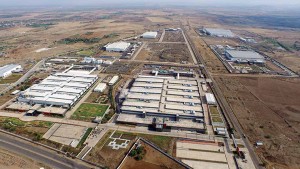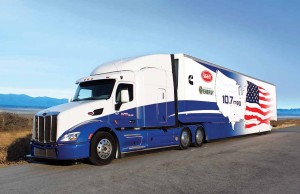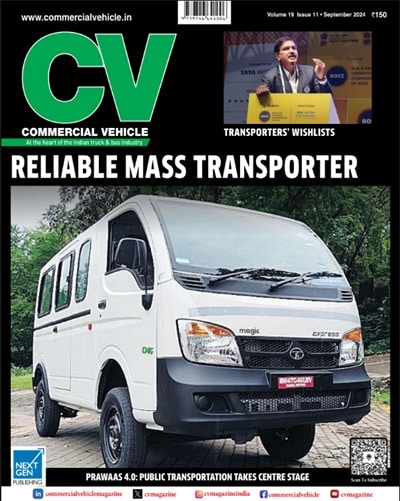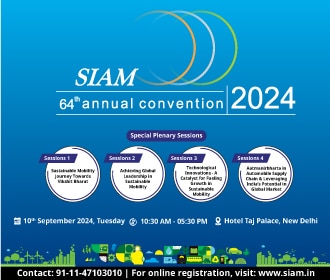Looking at India as an important market, Cummins Inc. is banking on advanced powertrain technologies to be a provider of choice.
Story by: Ashish Bhatia
Cummins Inc. announced an investment of Rs.300 crore towards the development of BSVI technologies and expansion of manufacturing facilities at Phaltan. The company also announced an investment of Rs.1000 crore to Rs.1500 crore towards the setting up of a technology centre at Pune. Claimed to be the biggest among the technology centres the company has, the one at Pune will go on stream by the end of this calender year, or by early next year. Hinting at a transformation that is taking place at Cummins India, and in-line with the global growth strategy of the parent, a conscious alignment of product portfolio is on to make it ‘fit-for-market’. With an eye on the future, the company is keen to provide a host of integrated solutions, with an objective to be the ‘powertrain provider of choice’. Cummins, according to Srikanth Padmanabhan, President, Cummins Engine Business, is concentrating on R&D and electrification of powertrains for commercial vehicles. Describing India as a key market for the company, Padmanabhan mentioned that focus will be on energy diversity, connectivity and automation. He drew attention to disruptive market drivers that have stemmed from a spate of regulatory compulsions. These are compelling enough to lower the carbon footprint, and apply relevant technology, he stated.

Advanced powertrain technologies
Leveraging its global know-how and the capabilities it has built in India, Cummins will offer advanced powertrain technologies by tapping new opportunities in the area of engines and components. With the advantage of scale, the company is looking at working closely with its clients to help them to successful tide over new regulations. Also in the manufacture of turbo and aftertreatment systems, Cummins wants to pass the benefits to its customers by leveraging its capabilities. Said Padmanabhan, “We will continue to focus on BSVI and alternate propulsion for reasons of fuel efficiency and total cost of ownership.” He touched upon the SuperTruck I and SuperTruck II, and explained that additional work on the simulation of the engine would be done.
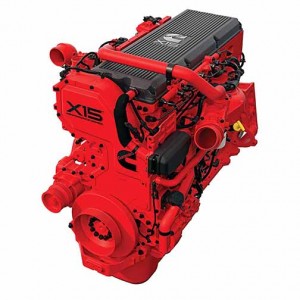
In 2010, the US Department of Energy (DoE) initiated the SuperTruck programme to improve long-haul Class 8 vehicle freight efficiency, a metric that uses payload, weight and fuel efficiency. The two are defined as tonne-miles per gallon. Three projects under the SuperTruck programme are underway. One is a Cummins-Peterbilt project. The other two involve Daimler Trucks North America and Navistar Inc. Of these, the SuperTruck II project is the five-year USD 160 million program that will see four teams participate. They are the same, which participated in the SuperTruck I project. The teams will work to exceed the results achieved in the SuperTruck I project. The participants spent USD 78.4 million, a combination of federal funding and their own money on the SuperTruck I project, and achieved higher freight efficiency, mile per gallon, thermal efficiency including waste heat recovery, weight reduction and aerodynamic drag co-efficient reduction. SuperTruck II is looking for a 100 per cent increase in freight-hauling efficiency and a new engine-efficiency standard of 55 per cent, a 31 per cent increase from a 2009 baseline measurement. While freight efficiency is the amount of freight carried and miles traveled for each gallon of fuel consumed, engine efficiency, known as Brake Thermal Efficiency (BTE), is the ratio of fuel energy converted to power output at the engine’s crankshaft. The industry average BTE for a 2009 Class 8 engine was 42 per cent.
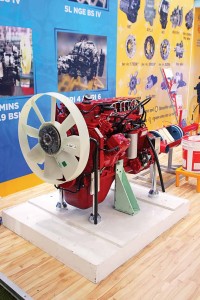
Success
Applying the technological success of SuperTruck projects to real world CVs, Cummins released X15 engine series, a new diesel engine piston design and turbocharging system for Volvo Trucks North America. A redesigned 13-litre N13 engine is claimed to use several improvements derived from the SuperTruck project. These include new control logic and a high-efficiency combustion system. Mentioned Padmanabhan, “The focus is to leverage electronics in the interest of connected technologies and intelligence.” In the realm of powertrain integration, the company is looking to integrate the engine, transmission, axles, and brakes. The effort is to offer higher value. Connected software, over the air calibrations, diagnostics and prognostics, Artificial Intelligence (AI) and Data Analytics (DA) are also the key focus areas of the company. Stressing upon the influence of changing emission norms on powertrain developments, Brett Merritt, General Manager, Global On-Highway Engine Business, said, “We want to be application driven in niche markets.” Continuing to invest in engines (of over 13-litre displacement) for leading markets, Merritt averred that the B-Series engines are selling the most. “It (B-Series engine) has a large marketshare in South America, North America, India and China,” he informed. Modifying the B-Series engine to accommodate a four-cylinder version for light-duty cycles, Cummins is keen to offer tailored solutions. In China, the company builds a 12-litre engine as the power and torque does not justify the use of a 15-litre engine. With the evolution of engines increasingly linked with emissions, technology and utilisation are taking precedence over costs. “There is a need to set aside future technologies as they will start to play out in the next five years,” Merritt mentioned.

Electrification
Working on fully-electric powertrains with an intention to offer them by 2019, Cummins will introduce range extended engines next year. These, according to Padmanabhan, will be for buses, pick-ups and delivery vans. Looking at both, a battery-electric and a range extender, the company, as far as components are concerned, is focusing on aligning materials. To attain the vision of a fully-electric powertrain, it is concentrating on battery pack management. With attention on power electronics from a thermal management point of view, the ultimate objective, said Padmanabhan, is to have a reliable and high quality solution. Hybrid powertrains, he stated, would be applied in heavy-duty applications initially. “Electrification of the auxiliaries is the need of the hour. By 2019, a cost effective start-up solution with specific duty cycles will find its way to the Indian market,” mentioned Merritt. Touching upon the joint venture between Cummins and Eaton for M&HCVs formed in April 2017 to offer an Automated Manual Transmission (AMT) product portfolio in the US, Merritt explained that a strong brand and service presence, in addition to a significant market share on the heavy duty side will be achieved. Cummins will bring its engine expertise and a strong presence to the table. In the interest of a sustainable product plan for five years the JV will focus on the development of advanced AMTs and integrated powertrains. It will also look at the development of a service network, and design and assembly of future M&HCV automated transmissions. Expected to expand its presence to other markets in the world, including India, the demand for reduction in carbon footprint and increase in fuel efficiency according to Jennifer Rumsey, Vice President and Chief Technical Officer, Cummins Inc., will be a significant calling factor as far as technology is concerned.

The future
To continue to play a significant role in some of the markets that Cummins is present in for a long time, diesel, if the trend for the future is anything to go by, is likely to throw up a contrasting picture. It will likely point at a move away from diesel. “We will continue to evolve,” said Rumsey. “We will provide a super power solution for CVs for transportation, off-highway, and stationary applications,” she informed. To include a continued focus on the internal combustion engine and its key components, the Super power solution, in India, will build on the ability to be frugal. Working towards meeting the BSVI challenge, Cummins is pursuing a ‘fit for market’ strategy in India. The company is addressing the need for a unique design and build methodology. This, it is confident, will increase its speed of development as well as output. Opined Rumsey, “Now is a critical period as far as the Indian market is concerned. With the NOx levels on the highways expected to go down by 30 per cent this year, and by 90 per cent when BSVI emission norms are enforced, Cummins is looking at a flurry of activities. According to Sherry Aaholm, Vice President and Chief Information Officer, new business concepts from the idea stage to commercial stage are being driven by leveraging resources from business units and functions under the ‘digital accelerator’ initiative. One such venture, said Aoholm, is Zed Connect. Zed Connect offers a smart phone app. called ‘Eld’. It was designed to electronically log hours for truck drivers and provide other key features for drivers and fleets. Such technologies may take time to come to India, the less advanced, and more relevant will not however.



